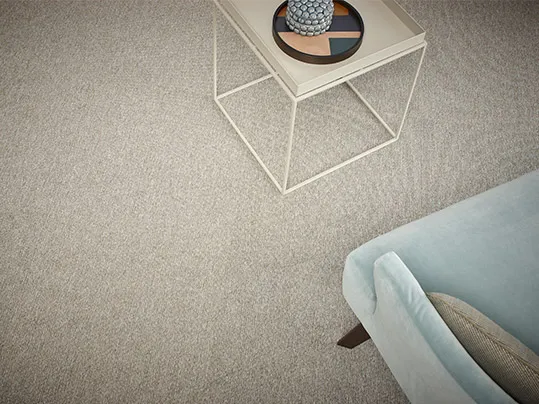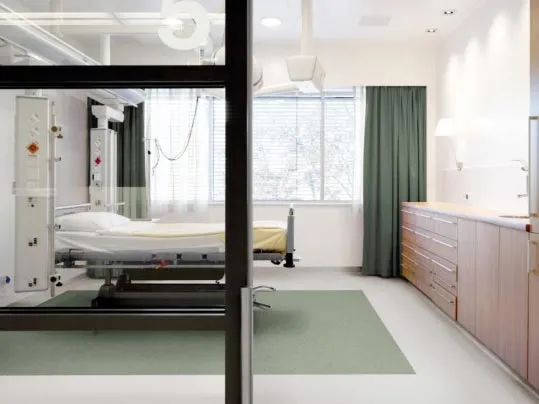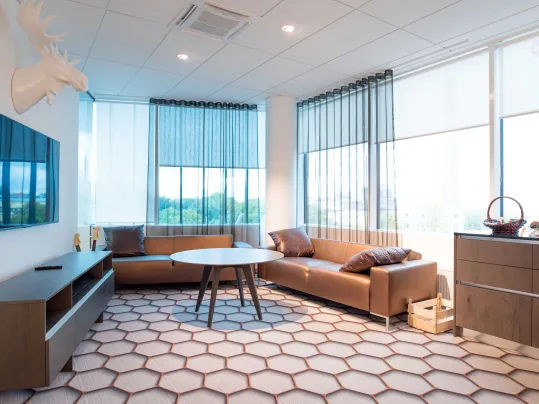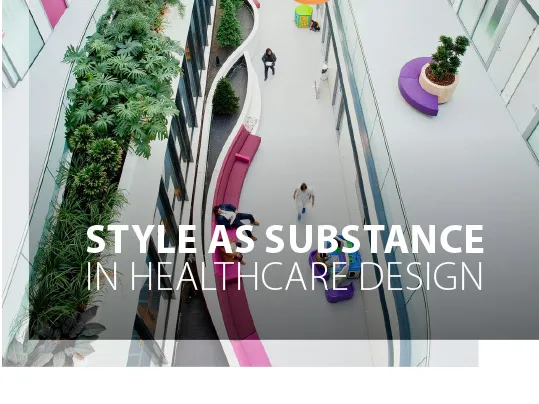From surviving to thriving
Cultivating a healing environment becomes more and more important. By taking a more holistic and patient-centred approach to design, architecture and interior design can help to create better environments.

Working from home has become the new norm. And with it, less commuting. This has meant fewer vehicle emissions and less noise pollution. The earth is even vibrating less due to reduced human activity as a result of lockdowns in most countries.
The natural world is extremely sensitive to these disturbances. And so cleaner air, the sound of birdsong and sightings of dolphins swimming happily in Turkey’s Bosphorus – ordinarily full of freight ships – came as welcome surprises during the COVID pandemic.
But there is another species that is highly sensitive to its environment: humans.
Environmental psychology looks at the ways in which we humans interact with the environment – natural and built. Just like the birds and dolphins, we rely on our environment for survival. And this means staying healthy.
Patients within healthcare settings are already experiencing a suboptimal state of physical or mental health. Add to this the psychological stress and anxiety that come with medical appointments, and cultivating a healing environment becomes even more important. But how can architecture and interior design help? By taking a more holistic and patient-centred approach to design.
.webp)
At the most basic level, the guiding principle behind designing for therapeutic effect is minimising stress. This means looking beyond what Maslow would call basic physical needs and including higher psychological and self-fulfilment needs as part of the picture of health.
In more concrete terms, a therapeutic design might consider the following, among others, from the patient perspective:
• Comfort
• Order; structure; clarity
• Autonomy & independence
• Connection with the outside world
• Safety
Comfort can be felt physically and psychologically. A home-from-home environment in a care home can be created by allowing residents to bring with them items of furniture or decorations from the homes they are (often reluctantly) leaving behind. Carrying with them memories, these familiar objects are part of a person’s life story and an extension of themselves – a reminder of their individual identity and place in the world.

.webp)
When faced with uncertainty about their future, patients and users of healthcare facilities benefit from predictability and order. More confusion is the last thing they need. Clear wayfinding and signposting can remove a lot of unnecessary stress on the part of patients and visitors. Clever flooring design is one functional yet attractive solution to wayfinding that can be implemented to guide visitors along their journey and distinguish specific areas or zones in a facility.
CREATE YOUR OWN CUSTOM DESIGN
Leaving the home for a stay in a healthcare facility can be incapacitating on many levels. Modern technology has some useful applications in these settings, as it gives a patient some control over their surroundings. A patient’s ability to regulate the temperature, brighten or dim the lighting in a room or close the curtains through the use of domotics can do wonders to reduce dependency on others and provide a sense of agency.
When applied to a healthcare setting, this design concept has been shown to have a particularly supportive effect. Incorporating the natural environment into the design of a hospital or other healthcare facility is believed to benefit the patient recovery experience.


The benefits of access to daylight are well documented. But being able to see the sun rise and set – the simple rhythm of the day – gives in-patients, especially, an external marker and a sense of staying connected to the wider world. Views out onto gardens or other green spaces can similarly boost mood and support recovery, satisfying our innate pull towards nature, as illustrated through the concept of biophelia.
Safety and hygiene in any healthcare setting are paramount. But therapeutic design also considers an environment’s ability / inability to make the user feel safe. Designing different spaces for different purposes and with varying degrees of social interaction is one example of this. An ill patient may be grateful of a private room to which to retreat, as and when they feel the need: Their own safe haven, as it were.


Read more on how design in general can promote health and wellbeing in our latest whitepaper: ‘Designing for Total Experience: Style as Substance in Healthcare Design’.
READ OUR LATEST WHITEPAPER